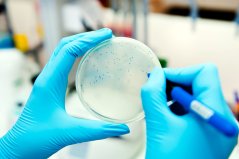
Project
The role of phages hitchhiking with nematodes in shaping bacterial communities
Nematodes are omnipresent in soil where they seek and infect bacteria. We will test if bacteriophages can use nematodes to hitchhike to their desired habitat.
Background
Bacteriophages are critical in soil and plant health, because of their role in shaping bacterial communities. Phages exert their ecological function by infecting bacteria, but face serious dispersal problems. First, bacteria are patchily distributed in soil. Second, phages are highly host specific. Third, soil can damage phage particles. Consequently, phages must get through this hostile soil labyrinth to reproduce without having sensory perception or motility. We propose that phages can overcome dispersal challenges with help from bacterivorous nematodes.Project description
Project description
We will set up a versatile experimental platform to unravel the interactions between nematodes, bacteria and bacteriophages. This will comprise substrates of increasing spatial complexity on which we will vary the spatial distribution and abundance of quick-growing laboratory model organisms (C. elegans, E. coli and T7 phage) and use fluorescence marking to distinguish bacterial populations. This set-up enables monitoring of dispersal mechanisms and phage-bacterial dynamics in a short timeframe. Taken together, we will show how nematode-based transfers of bacteria and phages contribute to soil community assembly and study this currently overlooked link in soil biodiversity.
